Gardening on the Rooftop: Tips and Tricks for Success
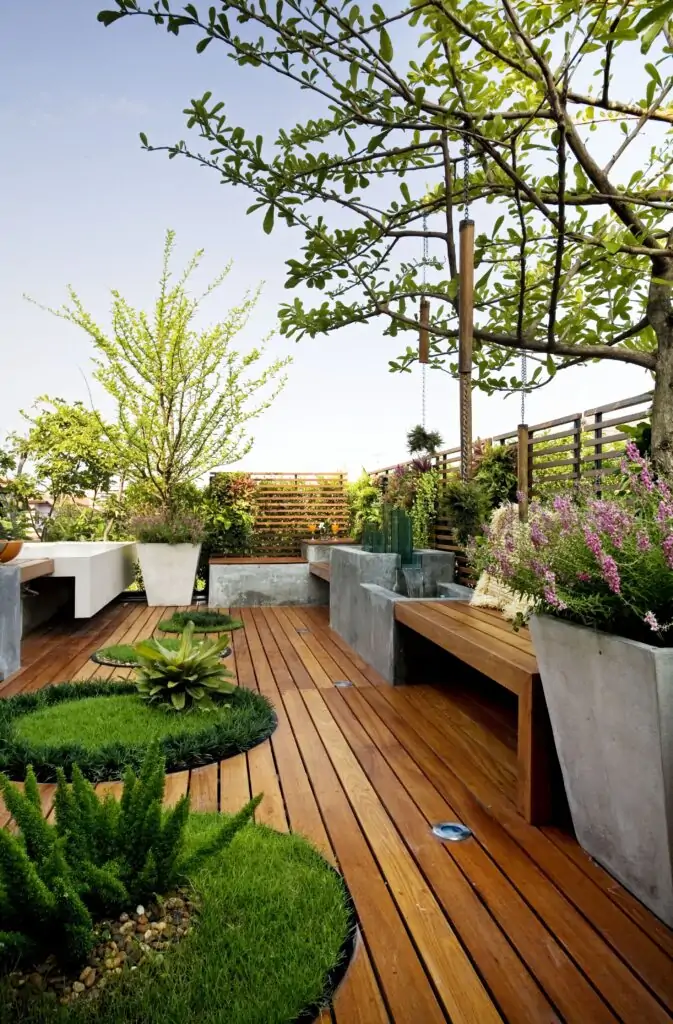
Gardening on the rooftop has been a popular practice in recent years as city people seek ways to connect with nature in the middle of hectic city life. Not only are rooftop gardens a viable way of enjoying greenery in the concrete jungle, but they also provide a one-of-a-kind opportunity to utilize wasted space and create a personal haven in the sky. The options for creating this type of garden are vast, ranging from potted plants to lush lawn-like surroundings.
Therefore, if you are looking for some inspiration and ideas to turn your rooftop into an eco-friendly oasis, keep reading for some of the greatest gardening tips and methods.
Herb Gardens
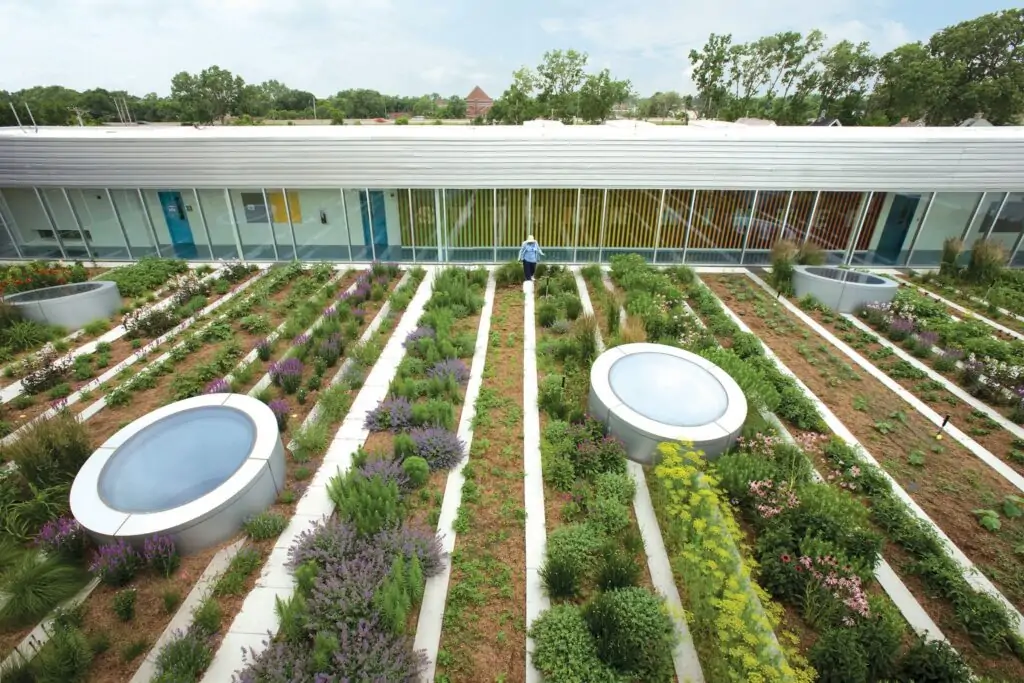
Imagine walking out onto your rooftop to pick fresh sprigs of basil, thyme, rosemary, and mint for your meal. Homegrown herbs provide unparalleled convenience and flavor, and a herb garden is a fantastic way to achieve it.
First and foremost, growing your own herbs is an eco-friendly practice that reduces waste and carbon footprint associated with store-bought packaged herbs. As shown in the garden rooftop photos, herb gardening also adds aesthetic value to the living space, turning it into a lush green oasis.
What’s more, herbs are incredibly easy to grow as they require minimal care and maintenance. They can be grown in containers, hanging baskets, or even on a windowsill. Besides, this type of garden can be designed in many ways to suit your space and style. You can create a designated herb garden bed, add decorative pathways or seating, or incorporate trellises for climbing herbs like sweet peas. The possibilities are endless: why don’t you explore them?
Hanging Gardens
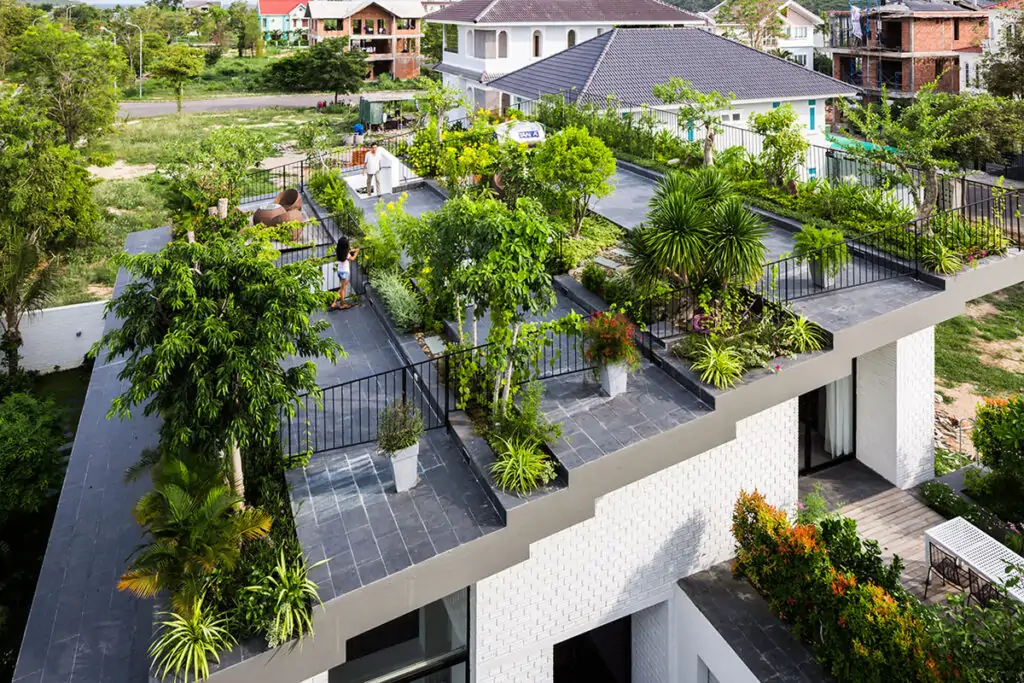
Hanging gardens are an excellent solution for those with limited space on their rooftops. These gardens allow you to make the most of your available space by utilizing vertical height and adding an extra dimension to your outdoor design. The good thing is that you can also hang planters or baskets from the railings, walls, or ceiling of rooftops, and that way, create a cascading effect of lush greenery.
To create an incredible garden on a rooftop, your design should take into consideration the particular needs of the plants you are going to grow. When picking plants, it might be better to choose the ones that thrive in containers and do not require a lot of space for their roots to spread. Some of the most common choices include trailing succulents, ivy, ferns, and petunias. By mixing and matching plants with different colors, textures, and growth habits, you will be able to create a visually stunning outdoor space.
Another crucial factor to take into account is the weight of the planters and soil. In order to avoid putting too much strain on the hanging mechanism, it is best to go for lightweight planters. On top of that, using a sturdy wire or chain to hang the planters can guarantee that they are securely anchored to your rooftop.
Turn It Into a Vineyard
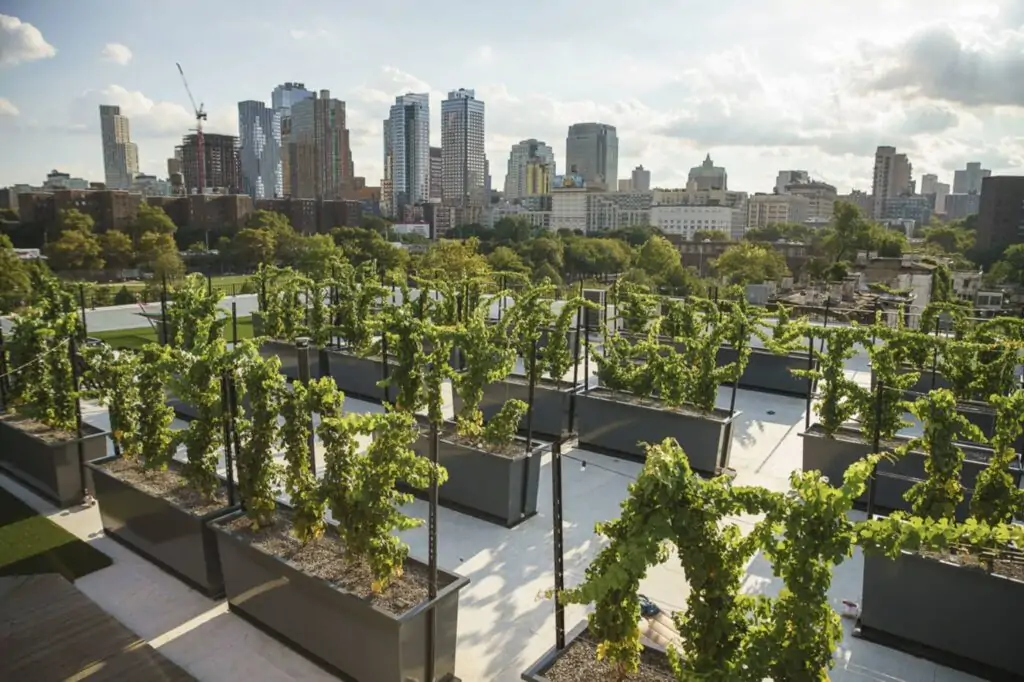
What else to grow on a rooftop garden? Grapes are probably the most unique and exciting answer to this question, especially in case you are a wine lover. Imagine sipping a glass of your very own homemade wine while taking in the stunning views of the city. While it may seem like a challenging and daunting project, the rewards of a successful home vineyard are truly exceptional.
Before starting this venture, it is important to consider the amount of space and planning required for it. Growing grapes in containers is a viable option for smaller spaces, while larger rooftops can accommodate a trellis system that supports grape vines. However, remember that grape vines require high maintenance, including pruning and regular watering, to yield a bountiful harvest of grapes.
Aside from the obvious benefits of having your own supply of grapes, this gardening idea is really all about creating a unique aesthetic appeal. The vines and trellis system can create a visually pleasing and tranquil atmosphere, which is perfect for relaxing and entertaining family members as well as guests.
Make It a Succulent Oasis
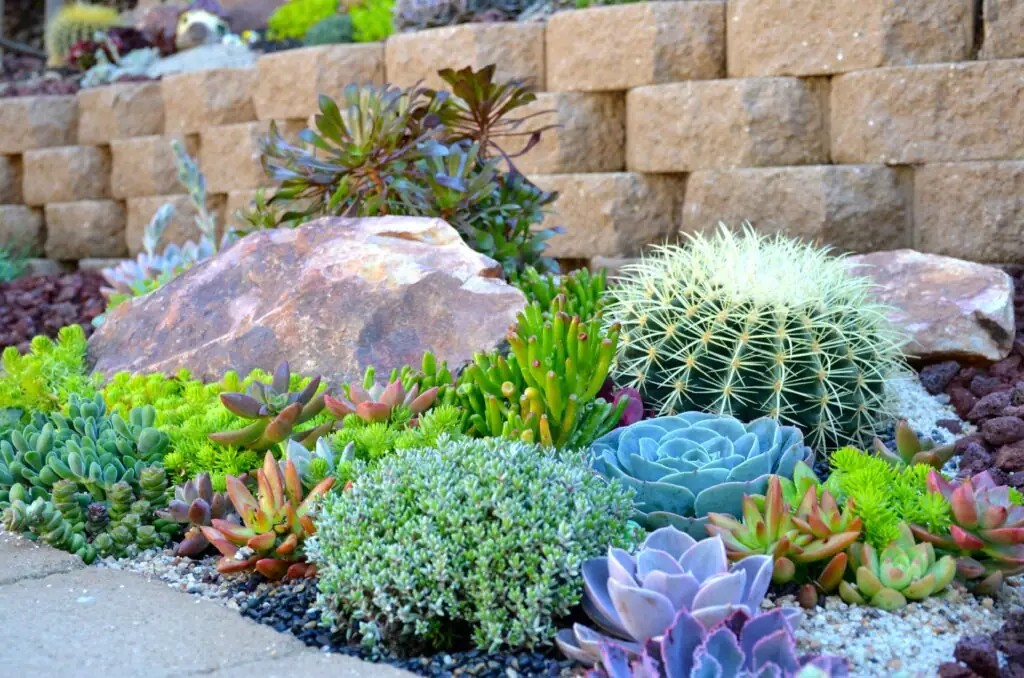
This gardening idea is becoming increasingly popular: decide on it if you want to get a truly stunning garden. Succulents are low-maintenance plants that store water in their leaves, which makes them perfect for outdoor environments with limited rainfall. Besides, with a wide range of sizes, shapes, and colors, succulents can be arranged in creative and eye-catching ways.
One common way to bring succulents into your rooftop is by creating a vertical garden. You can attach a living wall panel or planter to a wall and fill it with various succulent species. That way, you can incorporate interesting design elements into your garden and also maximize your space. In addition, you can experiment with different containers and arrangements for a more beautiful display.
Want more reasons why you should choose this particular type of rooftop gardening? Its benefits include not having to worry about watering and plant nutrition. Succulents are robust, which makes them a great choice for an inexperienced gardener.
What’s more, as we know, plants can improve air quality by filtering out toxins and releasing oxygen. By adding succulents to your outdoor space, you can create a peaceful and relaxing environment that promotes your well-being.
What About Beekeeping?
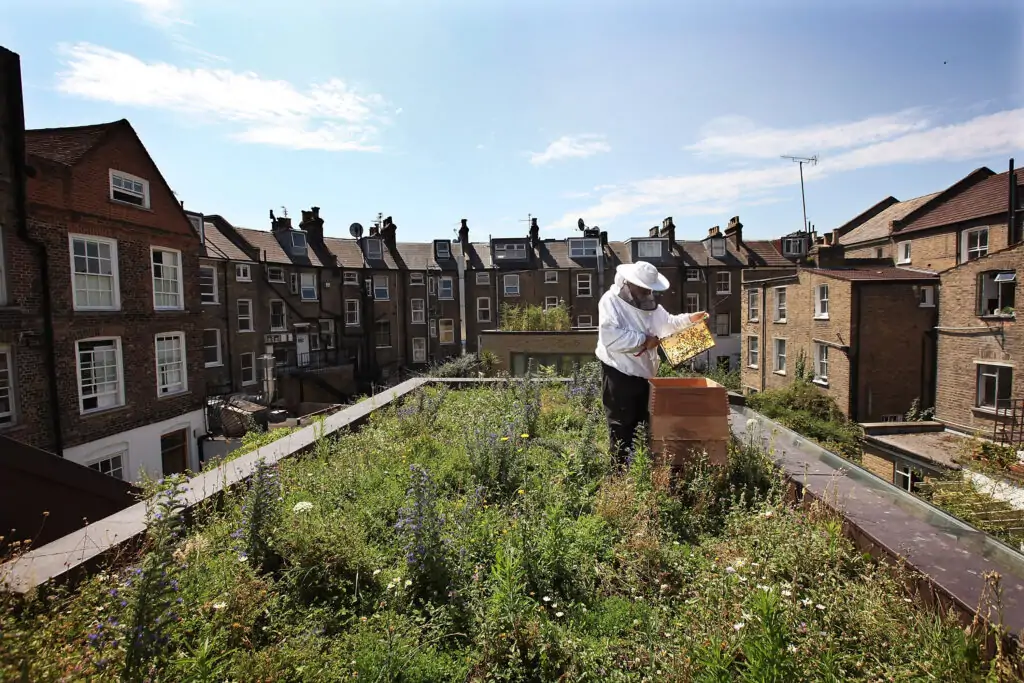
Beekeeping on rooftops is an exciting and eco-friendly way to support the local ecosystem as well as to produce your own honey. Not to mention that bees are a significant part of the food chain, and by providing a habitat for them in your own house, you’re doing your part to guarantee that they continue to thrive.
Before starting a beekeeping project, it is crucial to have the proper safety precautions and equipment in place to ensure the safety of both you and the bees. It’s also important to research local laws and regulations regarding beekeeping to make sure that you are compliant.
What to grow on a rooftop garden is also an important question to answer if you want to take up beekeeping. Choosing the right plants is vital in attracting bees to your rooftop beekeeping project. Bee-friendly plants such as lavender, sunflowers, and wildflowers are great options for providing bees with a source of nectar and pollen.
So, with a thriving outdoor beekeeping project, you’ll be able to enjoy the delicious and nutritious honey produced by your bees while also supporting the environment.
Why Are Rooftop Gardens Good?
These types of gardens have numerous benefits that make them an excellent addition to any urban environment. First and foremost, they provide a valuable source of fresh produce, herbs, and flowers that can be grown right in the heart of the city. Not only is this convenient for those who enjoy cooking and gardening, but it also helps to reduce the carbon footprint associated with transporting food from rural areas to urban centers.
Besides, roof-top gardens also provide an excellent opportunity for individuals to connect with nature and enjoy the outdoors, even in an urban area. Spending time outside has been shown to have numerous physical and mental health benefits, including reducing stress and improving overall mental well-being.
On top of that, it helps to mitigate the urban heat island effect, which occurs when the temperature in these areas is significantly higher than in surrounding rural areas. This can lead to increased energy consumption and greenhouse gas emissions from air conditioning systems, which can further exacerbate climate change. So, if you plant vegetation on rooftops, the plants will absorb heat and cool the surrounding air, helping to reduce the urban heat island effect.
The Bottom Line
Gardening on the rooftop is a creative and practical way to grow plants and enhance your living space. Whether you are a seasoned gardener or a beginner, there are various options for you to choose from, such as herb gardens, hanging gardens, rooftop vineyards, and more. Rooftop gardening can help improve air quality, promote pollination, and even provide fresh produce. It can also be a fun and rewarding way to express your creativity and enjoy the outdoors without leaving your home. So, with the proper planning and care, anyone can engage in gardening on the rooftop and enjoy the numerous rewards that come with it.